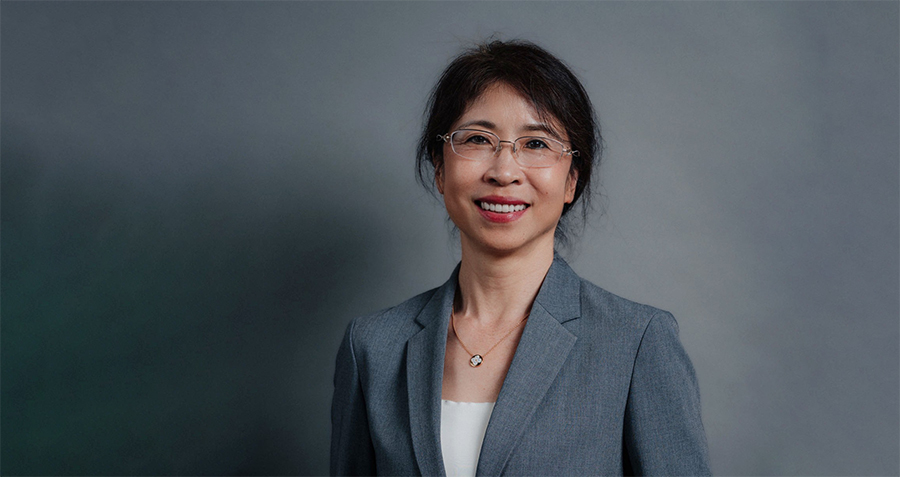Over the past decade, the digitization of assets has evolved from a niche experiment into a structural force in global finance. As tokenization, decentralized finance (DeFi) and artificial intelligence converge, the boundaries between traditional and digital markets are beginning to blur. With institutional participation growing and regulators racing to keep pace, digital assets are no longer a speculative corner of the internet economy but an emerging foundation for how value will be created, transferred and stored in the future.
In this interview, Khalid Mazouz, General Partner and CIO of digital asset management firm M55 Capital, discusses the phases of digital asset development, the potential of DeFi and a future where digital assets are indiscernible from traditional assets.
Q. The digital asset industry has changed dramatically over the past decade. How would you describe the key stages of its evolution?
A. The industry has developed in clear cycles, each one shaped by new technology, regulation and investor behavior. In the early days, around 2013 to 2016, the focus was purely on building infrastructure—exchanges, wallets and mining operations. The entire ecosystem revolved around Bitcoin, and most of the innovation was happening in Asia, where the majority of the Bitcoin supply and computing power were concentrated.
The next phase came with the rise of Ethereum and the 2017 initial coin offering (ICO) boom, which introduced programmable money and decentralized applications. That was the first time projects could raise funds directly from the public and build entire ecosystems on-chain. It was a chaotic but creative period that showed the potential of blockchain beyond currency.
The 2020 cycle was defined by liquidity, experimentation and hype. DeFi, NFTs and Game Finance (GameFi) showcased both the creativity and the collective appetite for risk that drive this industry. The market matured, venture capital moved in, and crypto became a legitimate asset class discussed alongside traditional investments. At the same time, the collapse of some major players revealed how over-leveraged and interconnected the system had become.
Now, we’re entering what I would call a phase of consolidation and integration. What started as experimentation in 2020 has evolved into infrastructure. The same tools that powered early DeFi are now used by institutions for real-world settlement, custody and yield. Institutional investors are setting new standards of transparency and governance. While digital assets remain in the alternative space, they now play a strategic role within diversified portfolios.
Q. What were some of the key lessons learned from those market cycles?
A. Each cycle has its own logic. The last one, from 2021 to 2022, was dominated by excess leverage and liquidity, and narrative-driven optimism. Everyone was over-invested—both in liquid markets and in private placements—and when the big collapses came, from Luna to FTX, the contagion was immediate. It created a chain reaction, and many projects and funds disappeared overnight.
For us, the big takeaway was risk management. We’d been investing mainly in the primary market—private deals before listing—but that model exposed us to too much liquidity risk. So after 2022, we shifted part of our focus to the “liquid” side, meaning strategies that can be adjusted daily and don’t carry the same risk of total loss. Essentially, we built a quant-driven hedge fund layer to complement our venture capital activities.
We started small, focusing on low-risk, low-return strategies to stabilize the portfolio. Then, as we gained more data and confidence, we developed “alpha” strategies that could compound returns closer to what we used to achieve in the primary market, but with less systemic risk, far better liquidity and downside control.
Q. To what degree has the crypto market become more stable, or is it still fundamentally volatile compared to traditional assets?
A. It depends on which part of crypto you’re looking at. Bitcoin has become a kind of reserve asset—it’s volatile, but its volatility now lives within a predictable range. You can think of it as the “digital gold.” You can move it across borders instantly, with no intermediaries or physical risk, which gives it a unique form of functional stability.
But below that top tier, most assets remain highly unstable. Out of the thousands of tokens out there, maybe the top 30 or 50 by market capitalization have real staying power. Many of the others will simply disappear over time and that is a normal part of the market’s creative destruction.
The difference now is that institutional investors have entered the market, and that changes the dynamics. With ETFs and regulated products, much of the new inflow is coming from traditional institutions. That makes price movements more rational and reduces the extreme drawdowns we used to see, but volatility will always be the price of freedom in a decentralized system.
Q. In terms of geography, where is this institutional investment coming from?
A. Asia still leads in terms of structure and exposure—it’s been at the core of the industry from the beginning. The Middle East, particularly Dubai and the UAE, has become another major center for both capital formation and regulation, and of course the United States is still a key player. Europe is there too, but often slower to adapt.
If you look at where the money ultimately originates—the beneficial owners—it’s very global. But the service providers, funds and exchanges offering direct exposure are mainly in Asia, the Middle East and the US. Those regions have built the infrastructure and the regulatory environments that attract capital. That’s where the ecosystems are being built—not just compliant ones, but also competitive ones.
Q. Beyond cryptocurrencies, what are the other digital assets we should be paying attention to?
A. I’d say looking at DeFi and tokenized real-world assets are two major areas. For me, DeFi remains one of the most promising areas because it’s the most straightforward application of blockchain to finance. It’s not about inventing something completely new; it’s about using technology to make existing financial processes more efficient, transparent and interoperable.
DeFi has become more user-friendly and, importantly, more compliant. Institutions can now stake assets directly in a regulated way. The technology is maturing fast, and we’re seeing bridges between traditional finance and DeFi being built.
At the same time, the tokenization of traditional assets is beginning to reshape the entire system. Anything can be tokenized—real estate, gold, equity, bonds—and once it’s tokenized, it can be used within DeFi for collateral, yield generation or leverage. Tokenization will gradually absorb the traditional financial world, just as the internet absorbed traditional media.
In the long run, every financial asset could exist in tokenized form, traded and settled 24/7, globally. That’s a radical shift from today’s market structure, where trading hours, intermediaries, and settlement times still create friction and inefficiency. It’s a structural evolution of how value moves in the world.
Q. What about central bank digital currencies (CBDCs)? Do you see them as competitors to decentralized digital assets?
A. They’ll coexist because they serve different purposes. The crypto industry was built on decentralization, while CBDCs are by definition centralized—they are state-issued, state-controlled and designed for monetary oversight. The right to issue money will always remain with governments.
A CBDC is essentially a digital version of fiat currency, built on a private or permissioned blockchain. It’s a modernization of the current system rather than a disruption. Stablecoins, on the other hand, are private-sector solutions that emerged to fill a gap before governments caught up.
Over time, we’ll see specialization: stablecoins for specific use cases—say, micropayments, real-estate transactions or tax payments—and CBDCs for large-scale national systems. The ecosystem will be fragmented by design, with both public and private players serving different needs, and sometimes competing on efficiency.
Q. For institutional investors entering the space, what are the key considerations around risk, compliance and exposure?
A. Institutional adoption didn’t start from within; it started with client demand. For years, many traditional asset managers dismissed crypto. But when their clients began asking for exposure—and when some crypto assets outperformed traditional portfolios—they had to respond.
The evolution was gradual: first funds offering indirect exposure, then ETFs, then regulated trading products. The approval of Bitcoin ETFs in 2023 and 2024 was the big turning point—it opened the door for mainstream capital.
For institutions, the main challenges are risk management and regulatory clarity. As long as regulators allow it and clients demand it, institutions will find a way to participate. The real difference now is that jurisdictions like Hong Kong, Singapore, the UAE and the US have created credible, bankable frameworks for operating. Even so, the regulatory landscape remains fragmented, and compliance standards vary widely.
Q. To what degree is there a jurisdiction that is leading in building those regulatory frameworks?
A. There isn’t a single global leader—it’s more like regional competition, with each jurisdiction pushing forward in its own way. Europe has introduced its Markets in Crypto-Assets Regulation (MiCA), but the approach there tends to be slower, heavier and more conservative.
Some smaller European and peripheral jurisdictions, like Malta, Lithuania, Estonia, Gibraltar and Switzerland (Zug), were early movers, but they were considered too “exotic” to become global leaders. Now, the major financial hubs are taking over. The US remains unpredictable—regulation there is evolving through enforcement—but it still shapes global trends.
What’s important is balance: regulation must protect investors and ensure transparency without stifling innovation. If it becomes too restrictive, it defeats the purpose of digital assets, which are meant to make finance more open and efficient.
Q. You mentioned AI as part of your own company strategy. How is artificial intelligence changing digital asset management?
A. In practice, AI runs through everything we do, from alpha generation to execution and risk management. On the alpha side, we go beyond traditional data. Our systems combine on-chain metrics and market sentiment to identify predictive signals and arbitrage opportunities that are hard to detect through conventional analysis.
In execution, AI helps us handle crypto’s constant volatility and fragmented liquidity. The models learn from every trade and adjust in real time, keeping slippage and transaction costs under control even in fast markets.
When it comes to risk, that’s where AI adds the most value. The market moves quickly, sometimes brutally. Our systems monitor exposure and market structure around the clock, automatically adjusting hedges and positions as conditions change. It’s like having a risk officer who never sleeps. AI gives us more awareness, more speed and a level of adaptability that humans alone could never maintain in real time.
Q. What kind of technological or institutional advances are still needed to bring digital assets into the financial mainstream?
A. For institutions, it’s mainly about regulation and demand. If clients want exposure and regulators provide a framework, institutions will follow.
For retail investors, adoption will be more subtle. Over time, users won’t even know whether they’re interacting with blockchain or not—they’ll just use products that work better. Whether it’s instant settlement, fractional ownership or new investment options, people care about the benefit and experience, not the technology behind it.
And that’s the ultimate goal: for digital infrastructure to be invisible. Just like most internet users don’t think about TCP/IP, future investors won’t think about whether an asset is tokenized or not. They will just expect everything to move instantly and globally.
Q. If we look ahead five years, what will digital asset management look like compared to today?
A. Five years is a lifetime in an industry that keeps accelerating. Things move quickly, but trust and adoption take time. The two key ingredients for mass adoption are greed and trust—people want the upside, but they also want to feel their assets are safe. Today, many still hesitate with digital assets mainly because they don’t fully trust the systems yet.
In five years, I think the distinction between “crypto” and “traditional” assets will start to fade. People will trade digital assets without realizing they’re on-chain. Traditional securities will be tokenized. Settlement will be instant. And what we call “crypto” today will look very different—more like a digital layer that carries all forms of value, from capital and ownership to identity, reputation, influence and the broader realm of social and creative capital.
We’re entering a new era where value itself becomes programmable. The underlying principles won’t change, but the efficiency, accessibility and transparency will be on a completely different level. It is the foundation of an Internet of Value.
Founded by Khalid Mazouz and Guillain Carpentier, M55 Capital is a multi-strategy fund spanning quantitative trading, DeFi and primary investments.



















